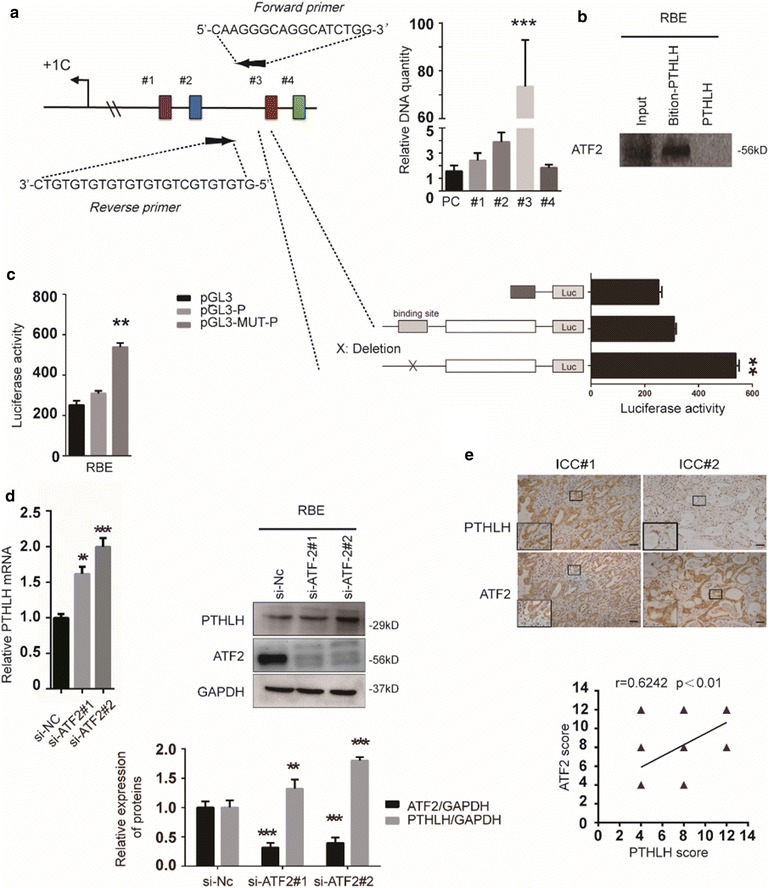Fig. 5.

Mapping the ATF2 response element on the PTHLH promoter. a Structure of the PTHLH promoter. Putative ATF2 response elements and fragments of the promoter that were cloned are depicted (colorful boxes, region “#1”–“#4”). Mutation of ATF2 element in the chromatin immunoprecipitation assay. Immunoprecipitated DNA was used as the template in PCR with primers corresponding to the proximal region of the PTHLH promoter (***p < 0.001). PC primers were used as control. b DNA pull-down assay. An equal amount of cell lysate was pulled down with biotinylated PTHLH DNA probe followed by immunoblotting with anti-ATF2 antibody. c Mutation of a PTHLH element at site #3 inhibits reporter activity. PTHLH was mutated, and the relative luciferase activity of the WT and mutant construct was assessed in RBC cells. The results are presented as the mean ± SD. The data were standardized to β-galactosidase (**p < 0.01). d An equal amount of cell lysate from RBE cells transfected with ATF2 small interfering RNA plasmid (si-ATF2), control plasmids (si-NC) or control was subjected to qPCR and immunoblotting with PTHLH or ATF-2 antibody, GAPDH reveals equal loading. e Stains of the same cohorts of ICC sections for analysis of the related expression of PTHLH and ATF2
